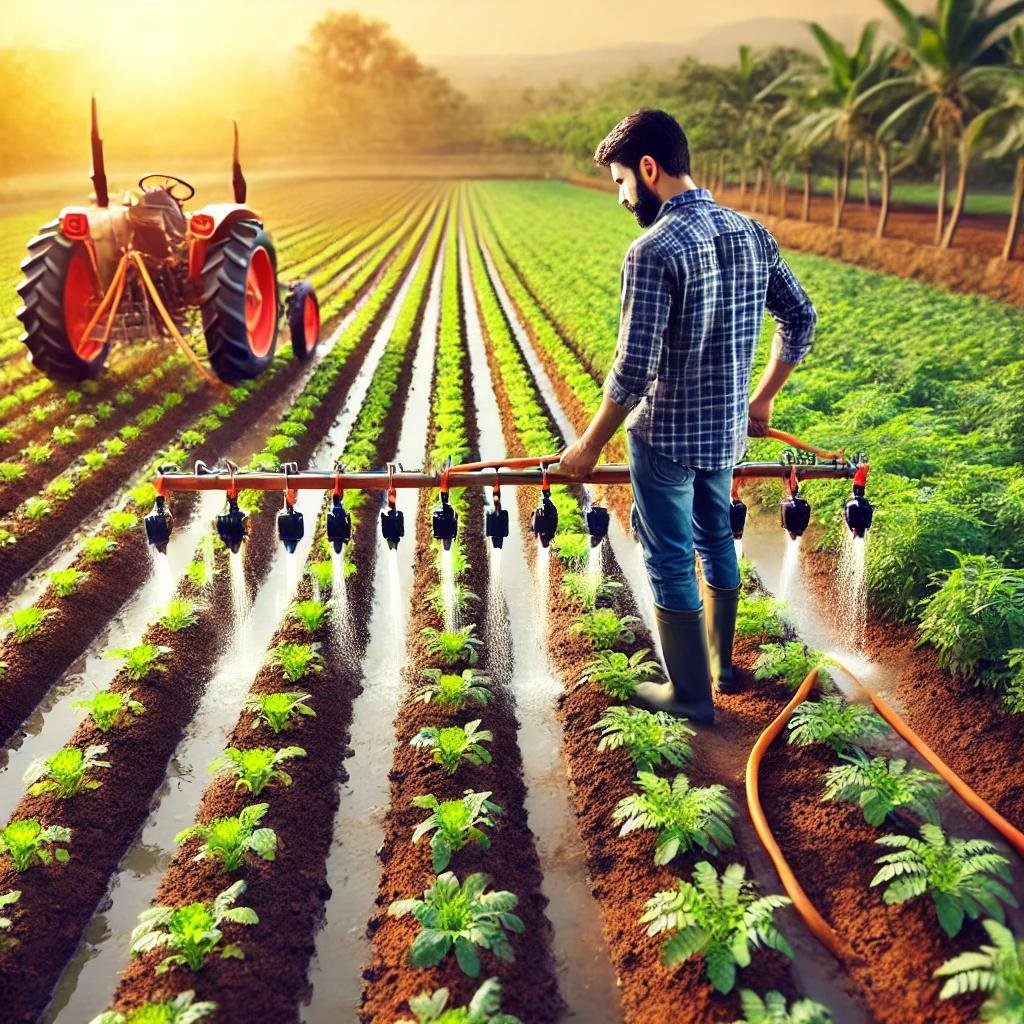Latest News
Exploring the Modi Government’s Agricultural Policies | Growth, Success Stories, and Setbacks

Under Prime Minister Narendra Modi Government direction, India’s agriculture industry has seen substantial transformation. The government has concentrated on reviving the agricultural landscape by enacting reforms and addressing problems including poor production, irrigation problems, and farmers’ hardship. We answer some of the most common questions (FAQs) on Modi’s agricultural policies in this post so you may learn more about the sector’s effects, development, achievements, and failures under his leadership.
1. What are the main agricultural initiatives that the Modi administration has implemented?
Prime Minister Modi has implemented a number of significant agriculture initiatives. These regulations seek to enhance farmers’ quality of life, boost output, and promote sustainability in agriculture. Among the most noteworthy policies are:

The Pradhan Mantri Kisan Samman Nidhi Scheme, or PM-KISAN, gives small and marginal farmers ₹6,000 a year in three equal payments with the goal of directly supporting their income. This program has revolutionised the way that farmers’ financial security is supported.
The Pradhan Mantri Fasal Bima Yojana (PMFBY) is a crop insurance program intended to shield farmers from financial losses brought on by pests, droughts, and floods.
By giving farmers comprehensive information on the nutritional health of their soil and advising them on improved crop management techniques, the Soil Health Card Scheme assists farmers in improving the quality of their soil.
The National Agriculture Market, or E-NAM, is an online marketplace that links producers and buyers while removing intermediaries and guaranteeing clear pricing.
Doubling Farmers’ Income by 2022: Using a mix of improved pricing, lower input costs, and increased yields, the Modi administration hopes to double farmers’ income by 2022.
2. What agricultural achievements has the Modi administration witnessed?
 The agriculture industry has improved as a result of a number of effective measures implemented by the Modi administration. Among the major achievements are:
The agriculture industry has improved as a result of a number of effective measures implemented by the Modi administration. Among the major achievements are:
MSP (Minimum Support Price) Increase: Farmers have been incentivised to cultivate crops with higher yields after the government raised the MSP for a number of crops.
Better Irrigation: To guarantee “Har Khet Ko Pani” (water for every field), the Modi administration has made large investments in irrigation infrastructure, such as the Pradhan Mantri Krishi Sinchayee Yojana (PMKSY).
Digitalisation and E-commerce in Agriculture: E-NAM’s introduction has revolutionised agricultural markets by giving farmers more access to pricing and lowering middlemen’s exploitation.
Record Food Grain Production: Under Modi’s leadership, India has produced food grains at a record rate, mostly as a result of better irrigation, technology, and agricultural methods.
Emphasis on Organic Farming: Because of government initiatives that support organic farming, this industry has seen rapid expansion, meeting the demand for organic products both domestically and abroad.
3. Has the Modi administration been able to alleviate the hardship of farmers?
Farmers’ suffering is still a significant problem in spite of several remedies. Even though the Modi administration has implemented programs like PM-KISAN and PMFBY to ease financial strains, problems still exist:
Loan Waivers & Financial Support: Although state governments (like Maharashtra) implemented programs like loan waivers, they have not been equally effective in every state. Opponents contend that the one-time loan exemptions often don’t deal with the underlying issues that lead to farmers’ debt.
Farmer Protests: Prominent demonstrations against contentious agricultural policies, including those in 2020–2021, brought to light the profound discontent within the farming community. The demonstrators believed that the legislation would undermine the Mandai system and cause the MSP system to be dismantled.
Unpredictable Weather: Farmers still confront difficulties due to unpredictable weather patterns and climate change, despite the government’s introduction of many insurance programs.
4. What are the shortcomings of the agriculture policy of the Modi government?
The Modi administration’s agriculture policy have encountered challenges despite their many achievements:
Farmer Protests Against Farm Laws: Farmers were terrified that the 2020 farm laws would undermine the MSP system, which was essential to their livelihood, in order to deregulate agriculture and encourage private investment in the industry. The regulations were subsequently overturned by the government in 2021 after one of India’s largest rallies.
Bureaucratic obstacles and delayed implementation: Due to infrastructural issues and bureaucratic hold-ups, certain programs, including eNAM and soil health cards, had delayed implementation. This has made it more difficult for these initiatives to reach all farmers.
Insufficient Attention to Small Farmers: Although legislative improvements have helped large-scale farmers, small farmers continue to struggle with improved market pricing, land holdings, and financing availability.
Unstable Prices: Although the MSP has increased for a number of commodities, the prices of many agricultural products are still erratic, which causes farmers to experience hardship when market prices drop below their costs of production.

5. How has the government endeavoured to accomplish the objective of increasing the income of farmers?
One of the main objectives outlined by the Modi administration was to double farmers’ income by 2022. To accomplish this goal, a number of efforts were launched, including:
Emphasis on Crop Diversification: Motivating farmers to switch from water-intensive crops like rice to more environmentally friendly ones like oilseeds and pulses. Reducing reliance on a single crop is another goal.
Financial Inclusion: Farmers and rural businesses may get finance to invest in new equipment and improved agricultural methods thanks to programs like PM-KISAN and Mudra Yojana.
Post-Harvest Infrastructure: Better facilities for processing, logistics, and storage have increased value addition and decreased waste, all of which have a direct positive impact on farmer revenue.
Extension Services and Technology Adoption: In order to assist farmers boost yields and implement better practices, the government has sought to promote access to technology. Precision farming and weather forecasting are two examples of digital technologies that are making farming more lucrative and sustainable.
6. How does technology fit into the agricultural reforms implemented by the Modi government?
A major factor in the government’s agricultural reforms has been technology. Farmers now have more influence because to the promotion of digital tools like eNAM, weather forecasting smartphone applications, and real-time pricing information. The government’s larger drive for a contemporary, tech-enabled agricultural system includes the use of drones for crop health monitoring, the promotion of climate-smart agriculture, and artificial intelligence for improved yield prediction.
In conclusion
Even though the Modi administration has made great progress in enhancing the agriculture sector, there are still issues. Addressing farmers’ hardship, enhancing on-the-ground implementation, and making sure that the most vulnerable farmers benefit from the program are the keys to success. For India’s agriculture to succeed in the long run, expansion and sustainability must be balanced.
The Modi administration wants to build a more resilient, affluent agricultural environment that can meet the demands of a constantly expanding population by enacting sensible reforms and using technology.












